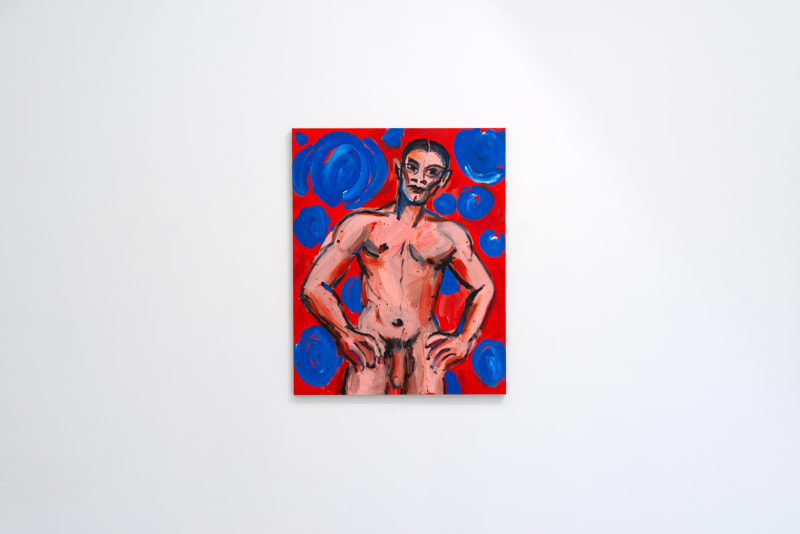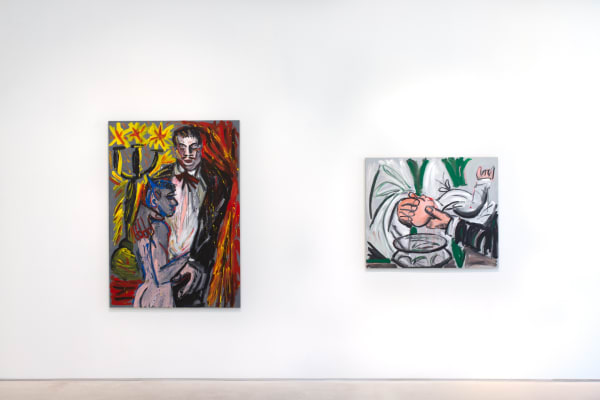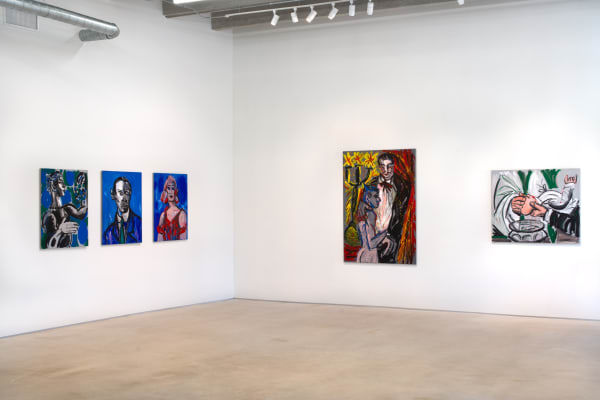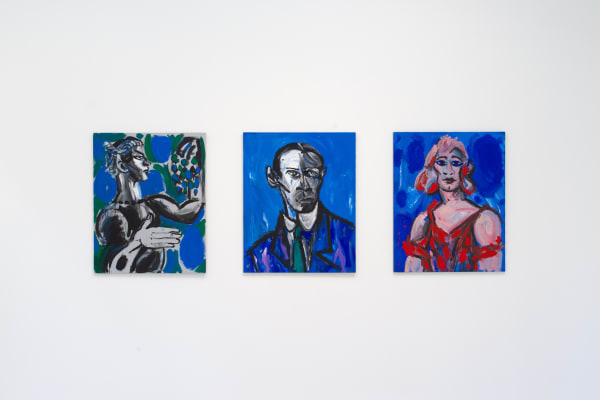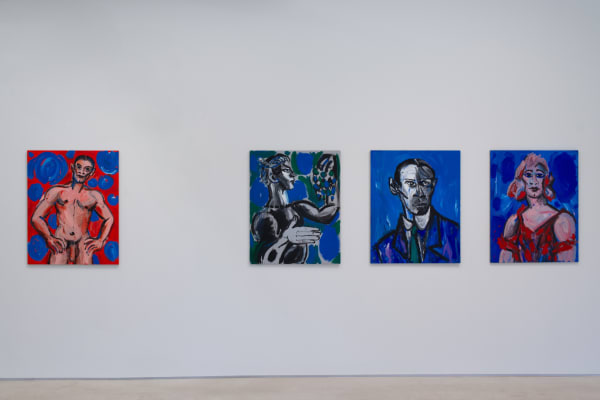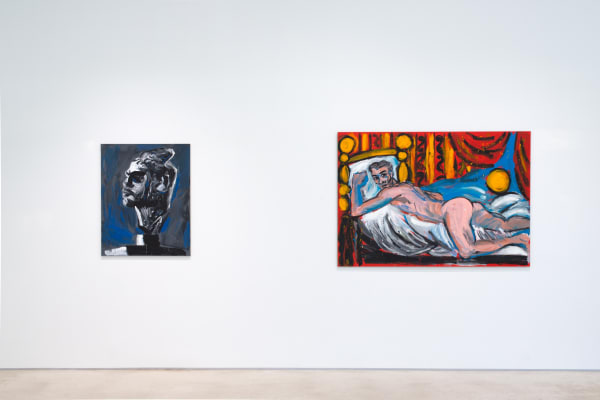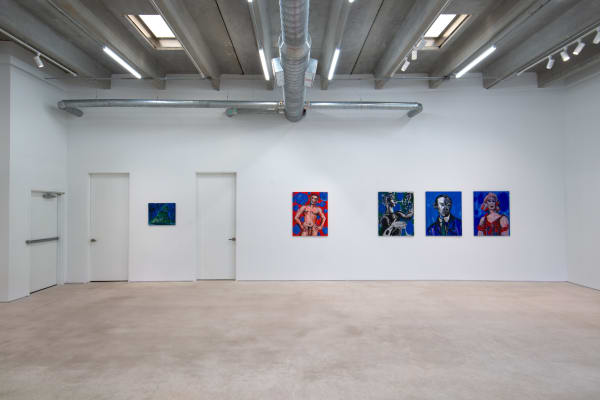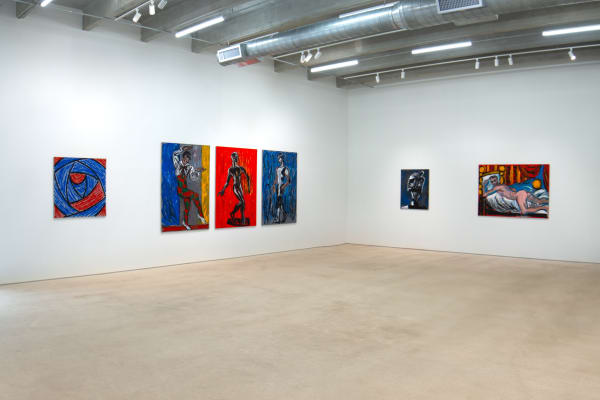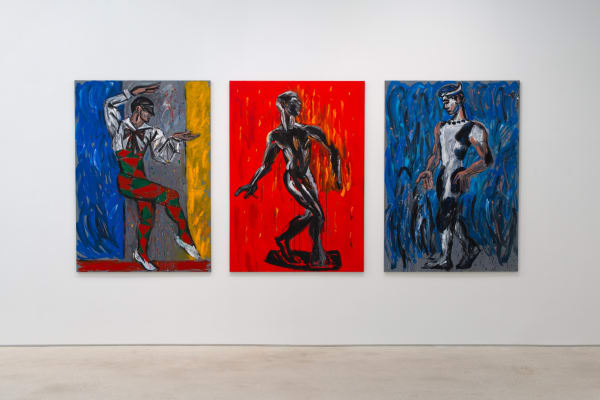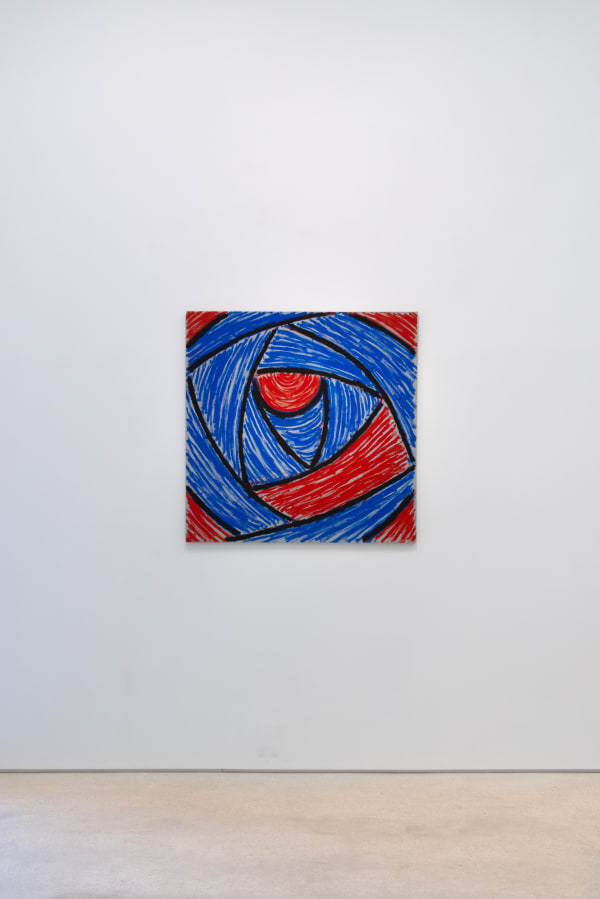Afternoon of a Faun
Voloshyn Gallery представляє персональну виставку Кароля Радзишевського «Післяполудень фавна». Митець пропонує квір-інтерпретацію постаті, що здійснила революцію у світі балету — польсько-українського хореографа й танцівника Вацлава Ніжинського.
Кароль Радзишевський працює в різних медіа — живописі, кіно, фотографії та інсталяції. У своїй практиці художник часто переосмислює творчість інших митців, зокрема представників східноєвропейського неоавангардного руху, розглядаючи їхню спадщину крізь квір- і феміністичну оптику або виокремлюючи її приховані квір-аспекти. Його підхід полягає у спробі переписати офіційну історію та створити власний, альтернативний наратив.
Постаттю Вацлава Ніжинського (1889–1950) Кароль Радзишевський захоплюється вже багато років. «Післяполудень фавна» не є їхньою першою зустріччю. Образ танцівника з’являється в одній із двадцяти двох робіт монументального циклу Poczet — серії портретів квір-постатей із історії польського, а ширше центральноєвропейського мистецтва, науки та політики (цей проєкт нині входить до колекції Музею сучасного мистецтва у Варшаві). Формально Радзишевський відсилає до класичної традиції — зокрема до «Почету польських королів» (1838–1893) Яна Матейка, який послідовно репрезентує володарів Польщі в хронологічному порядку. Ця серія портретів тривалий час прикрашала стіни шкільних кабінетів історії, перетворившись на своєрідний візуальний канон, закарбований у колективній пам’яті кількох поколінь.
Серія Poczet Кароля Радзишевського пропонує новий, негетеронормативний погляд на історію, відкриваючи постаті квір-героїв, яких було виключено з офіційного канону та шкільних наративів. У своїй практиці художник розглядає історію не лише як нормативну оповідь про минуле, а й як засіб навчання, передачі та збереження знання — про те, ким ми є сьогодні і ким потенційно можемо стати. У цьому контексті Радзишевський створює незвичну живописну хронологію, у якій постать Вацлава Ніжинського постає як поетичний і водночас травматичний символ.
Вацлав народився в Києві, у сім’ї польських емігрантів-танцівників. Історія виставки починається з релігійного епізоду — хрещення Вацлава у варшавському костелі Святого Хреста. Ніжинський постає з розмитими контурами, ніби лише починає набувати форми, визначати себе, з’являтися у світі. Та, можливо, його обриси так і не стануть чіткими залишаючи балетмейстера у стані між легендою та загадкою. Серед білих, зелених і чорних площин Ніжинський зависає між свяченою водою та рукою батька. Радзишевський реконструює біографію митця, утримуючи її у напрузі між містичним і еротичним, фігуративним і абстрактним, високим і вульгарним. Саме з цієї відірваної від землі діалектики, але приреченої до падіння — народжується революція руху, тіла й уяви.
Ще зовсім дитиною, Вацлав разом із сестрою блукав вечірнім Києвом. Майже щовечора він відвідував виступи своїх батьків. Київ 1893 року був вибухом барв, звуків і запахів. У свідомості юного Ніжинського вечірні прогулянки перетворюються на захопливі мандрівки живим, мінливим містом. Морозне зоряне небо, пам’ятник гетьману Богдану Хмельницькому на Софійській площі можливо, саме так бачив його маленький Вацлав у Києві 1893 року: тремтливим, нечітким, злитим воєдино зі своїм конем.
Із ранньої юності Ніжинський навчався танцю, здебільшого в Імператорській балетній школі у Санкт-Петербурзі, де одразу був відзначений як винятковий учень і майбутня зірка сцени. Його блискучий талант і приваблива зовнішність швидко привернули увагу значно старших за нього постатей — коханців, опікунів, маніпуляторів.
Образ його першого коханця не з’являється безпосередньо на полотні, проте його присутність втілена у назві — “Квартира князя Павла Львова”. Радзишевський застосовує іронічний і водночас інтимний прийом, показуючи Ніжинського очима князя, який ідеалізує молодого коханця. Той розпростертий на ліжку, виставивши стегно, нагадує одаліску — вразливу, але таку, що сміливо зустрічає погляд глядача. Інший персонаж — російський імпресаріо Сергій Дягілєв — у трактуванні Радзишевського нагадує вампіра, запрошеного до дому крізь прочинені двері (робота Dancing for Diaghilev). Протягом тривалого часу Дягілєв опікувався не лише самим Ніжинським, а й його сестрою та матір’ю. Саме він вивіз танцівника до Парижа, де розпочався справжній зліт його кар’єри.
Більша частина виставки містить прямі відсилання до творчості Ніжинського. Із широкого репертуару танцівника Радзишевський виокремлює ролі та образи, позначені гендерною й сексуальною амбівалентністю. Його цікавить тіло в русі, перформативність танцю, а також костюм, маскування й перевтілення. На одному з полотен Ніжинський постає у повному гримі й костюмі, оздобленому пелюстками троянд (The Spirit of the Rose). Червоні тони місцями зливаються з тілом танцівника, що передає внутрішню меланхолію та напруження.
Інші три картини утворюють своєрідну кінематографічну послідовність, ніби стоп-моушн анімацію, у якій художник розкриває рух танцівника (Nijinsky as Harlequin, Tänzer Nijinsky [after Georg Kolbe], Afternoon of a Faun). Перш ніж Ніжинський завершує пірует, він кілька разів трансформується: спершу — танцівник із піднятою ногою у костюмі Арлекіна, подібний до безликого геометричного образу; потім — Ніжинський із розпростертими руками, як палаюча скульптура у стилі Георга Кольбе, улюбленого скульптора нацистів; і, зрештою, людина-козел із випнутими грудьми та рогами у композиції Afternoon of a Faun.
Поруч із «Весною священною», саме «Післяполуденний відпочинок фавна» став тією роботою, у якій митець розірвав із принципами класичного балету, проклавши шлях до формальних експериментів у танці, що тривають до сьогодні. Відтоді Фавн у балеті перестає бути втіленням досконалості і, подібно до Ніжинського та глядача, який спостерігає за ним, постає земною істотою, сповненою напруги та еротизму.
Він тваринний, із мінімалістичною хореографією, що нагадує пласкі тіла єгипетських ієрогліфів і зображення героїв на поверхнях античних грецьких ваз.
Розрив класичних симетрій і ієрархій.
Оргазм, приступ запаморочення.
Ніжинський записує у своєму щоденнику, що відчувати — означає бути богом, а не відчувати — бути мавпою. Він пише: «Це тіло відчувало, а не розум».
Потім він входить у царство психічної хвороби, де перебуватиме тридцять років — аж до смерті.
Від цього періоду збереглося кілька десятків малюнків олівцем і крейдою на папері.
Ніжинський малює нав’язливо, його лінії утворюють кола, мандали, образ ока.
Можливо, це партитури хореографії, яку він упорядковував у своїй свідомості?
Лінії перетворюються на кроки, а кроки — на сузір’я.
Радзішевський завершує виставку абстрактною роботою, створеною за мотивами Ніжинського, — ніби сам акт копіювання може розгадати таємницю митця (Без назви [за Ніжинським]).
«Полудень фавна» Кароля Радзішевського — це також виставка про мистецтво як таке і його революційний потенціал. Радзішевський не тільки приєднується до групи людей, які малювали, ліпили та описували Ніжинського, а й буквально представляє їхні роботи у своїх картинах: фрагменти хореографії, фотографії, ескізи, костюми та скульптури. Він створює напівдокументальний, напівуявний лабіринт, презентуючи свою стратегію як архівного художника, додаючи балетмейстера до нового канону квір-мистецтва. Ці дії сприяють тривалому і важкому процесу деколонізації історій мистецтва і культури в Центральній і Східній Європі. Радзишевський переносить Ніжинського в демократичний простір, де він може існувати поза імперською пропагандою, де він може бути вільним.
Руки витягнуті в сторони. Пальці рук і ніг розчепірені. Шия, як у лебедя і козла, то витягнута, то згорблена. Годинник б’є годину Фавна. Полуденне сонце не заходить над Києвом.
By Michał Grzegorzek
